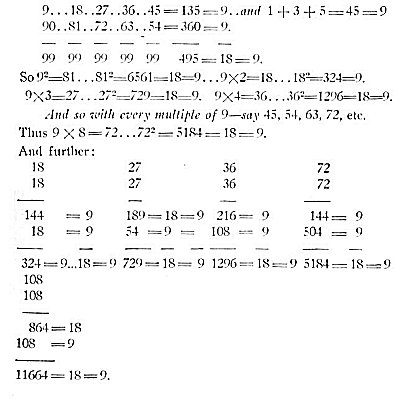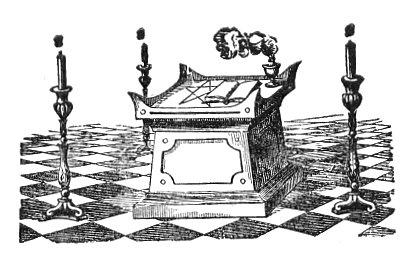p. 371
SYMBOLS were the almost universal language of ancient theology. They were the most obvious method of instruction; for, like nature herself, they addressed the understanding through the eye; and the most ancient expressions denoting communication of religious knowledge, signify ocular exhibition. The first teachers of mankind borrowed this method of instruction; and it comprised an endless store of pregnant hieroglyphics. These lessons of the olden time were the riddles of the Sphynx, tempting the curious by their quaintness, but involving the personal risk of the adventurous interpreter. “The Gods themselves,” it was said, “disclose their intentions to the wise, but to fools their teaching is unintelligible;” and the King of the Delphic Oracle was said not to declare, nor on the other hand to conceal; but emphatically to “intimate or signify.”
The Ancient Sages, both barbarian and Greek, involved their meaning in similar indirections and enigmas; their lessons were conveyed either in visible symbols, or in those “parables and dark sayings of old,” which the Israelites considered it a sacred duty to hand down unchanged to successive generations. The explanatory tokens employed by man, whether emblematical objects or actions, symbol’s or mystic ceremonies, were like the mystic signs and portents either in dreams or by the wayside, supposed to be significant of the intentions of the Gods; both required the aid of anxious thought and skillful interpretation. It was only by a correct appreciation of analogous problems of nature, that the will of Heaven could be understood by the Diviner, or the lessons of Wisdom become manifest to the Sage.
The Mysteries were a series of symbols; and what was spoken there consisted wholly of accessory explanations of the act or image; sacred commentaries, explanatory of established symbols; with little of those independent traditions embodying physical or moral speculation, in which the elements or planets were the
p. 372
actors, and the creation and revolutions of the world were intermingled with recollections of ancient events: and yet with so much of that also, that nature became her own expositor through the medium of an arbitrary symbolical instruction; and the ancient views of the relation between the human and divine received dramatic forms.
There has ever been an intimate alliance between the two systems, the symbolic and the philosophical, in the allegories of the monuments of all ages, in the symbolic writings of the priests of all nations, in the rituals of all secret and mysterious societies; there has been a constant series, an invariable uniformity of principles, which come from an aggregate, vast, imposing, and true, composed of parts that fit harmoniously only there.
Symbolical instruction is recommended by the constant and uniform usage of antiquity; and it has retained its influence throughout all ages, as a system of mysterious communication. The Deity, in his revelations to man, adopted the use of material images for the purpose of enforcing sublime truths; and Christ taught by symbols and parables. The mysterious knowledge of the Druids was embodied in signs and symbols. Taliesin, describing his initiation, says: “The secrets were imparted to me by the old Giantess (Ceridwen, or Isis), without the use of audible language.” And again he says, “I am a silent proficient.”
Initiation was a school, in which were taught the truths of primitive revelation, the existence and attributes of one God, the immortality of the Soul, rewards and punishments in a future life, the phenomena of Nature, the arts, the sciences, morality, legislation, philosophy, and philanthropy, and what we now style psychology and metaphysics, with animal magnetism, and the other occult sciences.
All the ideas of the Priests of Hindostan, Persia, Syria, Arabia, Chaldæa, Phœnicia, were known to the Egyptian Priests. The rational Indian philosophy, after penetrating Persia and Chaldæa, gave birth to the Egyptian Mysteries. We find that the use of Hieroglyphics was preceded in Egypt by that of the easily understood symbols and figures, from the mineral, animal, and vegetable kingdoms, used by the Indians, Persians, and Chaldæans to express their thoughts; and this primitive philosophy was the basis of the modern philosophy of Pythagoras and Plato.
p. 373
All the philosophers and legislators that made Antiquity illustrious, were pupils of the initiation; and all the beneficent modifications in the religions of the different people instructed by them were owing to their institution and extension of the Mysteries. In the chaos of popular superstitions, those Mysteries alone kept man from lapsing into absolute brutishness. Zoroaster and Confucius drew their doctrines from the Mysteries. Clemens of Alexandria, speaking of the Great Mysteries, says: “Here ends all instruction. Nature and all things are seen and known.” Had moral truths alone been taught the Initiate, the Mysteries could never have deserved nor received the magnificent eulogiums of the most enlightened men of Antiquity,–of Pindar, Plutarch, Isocrates, Diodorus, Plato, Euripides, Socrates, Aristophanes, Cicero, Epictetus, Marcus Aurelius, and others;–philosophers hostile to the Sacerdotal Spirit, or historians devoted to the investigation of Truth. No: all the sciences were taught there; and those oral or written traditions briefly communicated, which reached back to the first age of the world.

Moe is the founder of GnosticWarrior.com. He is a father, husband, author, martial arts black belt, and an expert in Gnosticism, the occult, and esotericism.





